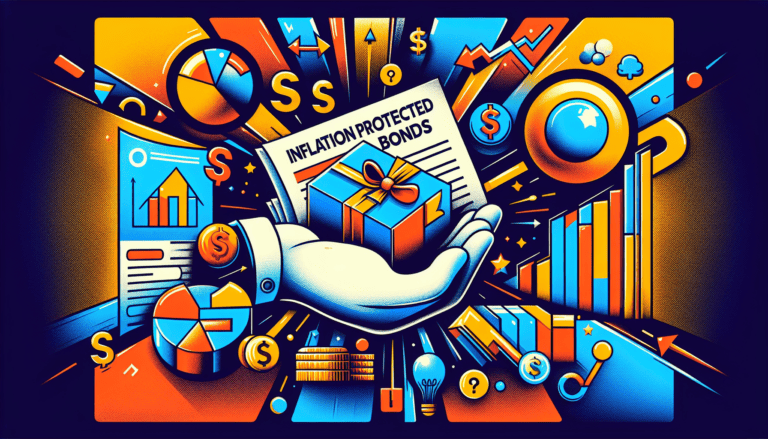Unlocking Investment Potential: Exploring Convertible Bonds – Bonds and Equities Hybrid

Introduction to Convertible Bonds
In the realm of investment opportunities, convertible bonds occupy a unique position as they blend characteristics of both bonds and equities. This dual nature allows them to offer a versatile investment strategy for beginner investors seeking to navigate the financial markets.
What Are Convertible Bonds?
Convertible bonds are a mix between a debt instrument and an equity security. They offer investors the right to convert their bond holdings into shares of the issuing company’s stock at a predetermined conversion rate, usually after a fixed period of time post-issuance (Investopedia). This option to convert imbues the bond with equity potential while maintaining the security of a fixed-income instrument.
Convertible bonds are issued by companies that seek to raise capital. These bonds tend to offer lower interest rates than traditional corporate bonds due to the conversion feature, which provides an added value for the bondholders. The conversion from bond to stock can be done at specific times during the bond’s life and is entirely at the discretion of the bondholder.
Characteristics of Convertible Bonds
Convertible bonds are characterized by their hybrid nature, possessing both debt and equity features. As corporate bonds, they can be exchanged for a preset number of the issuer’s shares, giving them the potential for equity-like returns if the company’s stock performs well (Investopedia).
Key characteristics of convertible bonds include:
- Conversion Ratio: This determines the number of shares a bondholder can obtain per bond if they decide to convert.
- Conversion Price: The price at which the bond can be converted into equity shares.
- Coupon Rate: Generally lower than that of similar non-convertible bonds due to the conversion feature.
- Maturity Date: The date on which the initial principal amount will be repaid to bondholders if the bond has not been converted.
Convertible bonds present an attractive proposition for investors looking to benefit from the appreciation potential of a company’s stock, with the added protection that bonds traditionally offer. They are particularly appealing in volatile markets where the ability to switch between a fixed-income security and an equity investment can offer an additional layer of safety.
For investors interested in learning more about the foundational aspects of bond investing, including inflation-protected bonds, municipal bonds, and strategies like bond laddering, our website provides a wealth of resources to enhance your financial literacy. Understanding the range of bond investment options, from government bonds to corporate bonds and international bonds, is essential for building a diversified and resilient investment portfolio.
Benefits for Bondholders
Convertible bonds provide a unique opportunity for bondholders to participate in the potential upside of a company’s equity while also offering the security and steady returns of a bond. This hybrid nature of convertible bonds makes them an appealing option for beginner investors looking to diversify their portfolios.
Equity Potential with Bond Security
Convertible bonds are a blend of debt and equity, offering investors the best of both worlds. Investors have the option to convert their bonds into a predetermined number of shares of the issuing company’s stock, allowing them to benefit from any increase in the stock’s price. This feature provides a potential for higher returns compared to traditional bonds, particularly if the company performs well and its share price appreciates.
However, if the stock price does not perform as expected, the investor still retains the bond’s attributes, including the return of principal at maturity and periodic interest payments. This dual nature serves as a safety net for investors, protecting them against the downside while still allowing them to capture the upside of the company’s equity growth.
Conversion Ratio Explained
The conversion ratio is a critical component of convertible bonds, as it determines the number of shares an investor will receive upon conversion. It is usually set at the time of issuance and remains fixed until the bond matures or is converted. The conversion ratio can be expressed as a formula:
Conversion Ratio = Par Value of Convertible Bond / Conversion Price
For example, if a convertible bond with a par value of $1,000 has a conversion price of $50 per share, the conversion ratio would be:
Conversion Ratio = $1,000 / $50 = 20 shares
This means that for each bond held, the investor could convert it into 20 shares of the company’s stock. Understanding the conversion ratio is essential for investors to evaluate the potential equity gains from their bond investments.
Coupon Rates and Yield
Convertible bonds typically offer lower coupon rates than traditional bonds due to the additional value provided by the conversion feature. Investors accept a lower interest payment in exchange for the possibility of converting the bond into stock, which could yield a higher return if the company’s stock price increases.
| Bond Type | Coupon Rate |
|---|---|
| Traditional Bond | Higher Coupon Rate |
| Convertible Bond | Lower Coupon Rate |
Despite the lower coupon rate, the overall yield of a convertible bond can be attractive when factoring in the potential for equity appreciation. The yield on a convertible bond can be thought of as a combination of the coupon payments and the possible growth in the value of the converted shares. Therefore, the total return on a convertible bond could exceed that of a traditional bond if the underlying stock performs well.
Investors interested in learning more about the impact of interest rates and yields on their bond investments can explore topics like inflation-protected bonds, bond valuation techniques, and interest rate risks in bond investing. Additionally, for those new to the investment world, a foundational understanding of bond markets can be gained through resources like basics of bond investing and strategies for fixed income portfolio.
Advantages for Issuers
Issuers of convertible bonds can reap several benefits from this unique financial instrument that blends characteristics of both bonds and equities. These advantages make convertible bonds an attractive option for companies looking to raise funds.
Lower Interest Rates
One of the primary benefits for issuers of convertible bonds is the ability to secure funding at a lower interest rate compared to traditional bonds. The inclusion of a conversion feature makes these bonds more appealing to investors, as there is potential for conversion into equity, particularly if the issuer’s stock price appreciates. This allows companies to lower their cost of borrowing, as investors are willing to accept a lower return in exchange for the possibility of benefiting from the company’s future growth (Investopedia).
The lower interest payments associated with convertible bonds can significantly reduce the financial burden on the company, particularly during periods where cash flow is a concern. This can be an important strategic move for companies looking to optimize their capital structure and manage their financial liabilities effectively.
Delaying Equity Dilution
Convertible bonds offer companies the advantage of delaying equity dilution. When companies issue additional shares to raise capital, existing shareholders’ ownership percentages are diluted. However, with convertible bonds, dilution is postponed until bondholders choose to convert their bonds into new shares of stock. This feature is particularly beneficial for companies that are mindful of maintaining control and wish to avoid immediate dilution of their current shareholders’ equity (Investopedia).
Additionally, if the company’s stock does not perform as expected and the conversion feature is not exercised by bondholders, the company may benefit by not having to dilute equity at all. This presents a lower-risk funding option for the issuer while still offering potential upside to investors.
Convertible bonds represent a strategic financing option for companies, providing a balance between the immediate capital infusion of issuing debt and the future potential of raising equity. For investors, these hybrid securities offer a way to participate in the company’s equity upside without forgoing the security of a bond. For more insights into bond investment strategies, readers may explore articles on bond laddering strategy and the basics of bond investing.
Key Features of Convertible Bonds
Convertible bonds stand out as a distinct investment vehicle in the financial markets, offering a combination of features from both bonds and equities. Two of the most critical aspects that define convertible bonds are the conversion price and the conversion premiums.
Understanding Conversion Price
The conversion price is pivotal in the mechanics of convertible bonds. It is the predetermined price at which the bondholder can opt to convert their bonds into shares of the company’s stock, effectively transitioning from a creditor to a shareholder. This price is set at the time of the bond’s issuance and plays a crucial role in the investor’s decision-making process.
According to Investopedia, the conversion price is determined during the structuring of the bond and directly influences the conversion ratio, which is the number of shares a bondholder receives upon conversion. For instance, if a convertible bond has a face value of $1,000 and the conversion price is $50 per share, the conversion ratio would be $1,000/$50, equating to 20 shares.
It’s essential for investors to comprehend this concept, as it affects the potential equity upside of the bond. The lower the conversion price relative to the current stock price, the more attractive the bond may be to investors seeking equity participation.
| Face Value | Conversion Price | Conversion Ratio |
|---|---|---|
| $1,000 | $50 | 20 Shares |
Conversion Premiums and Their Impact
The conversion premium is a measure of how much more an investor pays for the convertible bond over its conversion value. Essentially, it’s the additional cost that comes with the flexibility and security of a bond, along with the potential upside of converting into equity. This premium reflects the investor’s expectation of the stock’s future appreciation.
As detailed by Investopedia, the conversion premium can be seen as a form of insurance premium that investors are willing to pay for the bond’s protective features and the conversion option. A higher conversion premium might indicate that the market expects significant growth in the company’s stock, whereas a lower premium could suggest a more conservative outlook.
The impact of conversion premiums on investment decisions is significant. Investors must weigh the cost of the premium against the potential for stock price appreciation. If the stock performs well, the premium may be justified; however, if the stock’s growth is sluggish, the premium could overshadow any gains from equity conversion.
Investors interested in the broader context of bond investing can gain foundational knowledge through resources such as basics of bond investing and explore specific niches like municipal bonds: tax-advantaged investing or international bonds: diversifying globally. For those considering convertible bonds, understanding bond valuation techniques and being aware of the credit risk and bond investments are crucial for making informed investment decisions.
Valuation and Investment Considerations
When assessing the value of convertible bonds, investors must account for both bond and equity features. This section will delve into the elements that influence convertible bond prices and the balance of risks and rewards that come with investing in this type of security.
Factors Influencing Convertible Bond Prices
The valuation of convertible bonds is a multifaceted process. Several factors impact the prices of these hybrid securities, and understanding these elements is vital for investors.
- Interest Rates: Similar to traditional bonds, convertible bond prices are inversely related to interest rates. As rates rise, bond prices typically fall, and vice versa.
- Credit Rating: The issuer’s creditworthiness can significantly affect bond prices. A higher credit rating suggests lower risk, potentially leading to higher bond prices.
- Underlying Stock Price: Since convertible bonds can be converted into stock, the price of the underlying equity plays a crucial role. If the stock price rises, the value of the convertible bond is likely to increase as well (Investopedia).
Given the complexity of pricing convertible bonds due to their dual nature, investors may benefit from familiarizing themselves with bond valuation techniques. These techniques can provide a framework for analyzing the potential returns from the bond and equity components of convertible bonds.
Risks and Rewards for Investors
Convertible bonds present a unique blend of risks and rewards that cater to a diverse investor profile:
Rewards:
- Equity Upside: Investors have the potential to benefit from stock price appreciation due to the conversion feature.
- Fixed Income: Even if the stock does not perform well, investors still receive regular coupon payments, much like a traditional bond.
- Lower Yield Trade-off: Although convertible bonds typically offer lower yields than non-convertible bonds, the trade-off is the added equity upside potential (Indeed).
Risks:
- Interest Rate Sensitivity: As with all fixed-income securities, convertible bonds are subject to interest rate risk. Changes in rates can impact bond prices (interest rate risks in bond investing).
- Credit Risk: The issuer’s ability to make payments affects the bond’s safety. A deteriorating credit rating can lead to a decrease in bond value (credit risk and bond investments).
- Conversion Premium: The premium paid over the current stock price for the conversion feature may not always justify the potential equity returns, especially if the stock price does not appreciate as anticipated.
Investors considering convertible bonds should weigh these factors carefully. The potential for equity-like gains comes with a unique set of risks. Therefore, it’s advisable for investors to conduct thorough due diligence and possibly consult with financial professionals. For those new to the bond market, starting with the basics of bond investing can provide a solid foundation before delving into more complex instruments like convertible bonds.
Convertible bonds offer a distinctive investment opportunity that combines the safety of bonds with the growth potential of equities. By understanding the factors that influence their pricing and the associated risks and rewards, investors can make informed decisions to enhance their portfolios while mitigating potential risks.
Convertible Bonds in Action
Convertible bonds offer a distinctive option for both investors and companies, combining the features of both bonds and equities. They can become particularly significant during specific corporate events and provide unique case studies that highlight their hybrid nature.
Corporate Events and Their Effects
Corporate events can significantly impact the performance and attractiveness of convertible bonds. Such events include mergers and acquisitions, restructuring, and stock price fluctuations. For instance, if a company’s stock price surges, the value of convertible bonds may rise due to the increased attractiveness of the conversion option. Conversely, if the company’s stock price falls, the bond aspect serves as a safety net, providing bondholders with fixed-income security.
Another corporate event that affects convertible bonds is a change in credit rating. An upgrade can lead to a price increase, while a downgrade can have the opposite effect. It’s also essential to consider the impact of market conditions, such as interest rate changes, which can affect the bond’s value due to its sensitivity to the underlying equity.
For a deeper dive into how such events influence the bond market, readers can explore topics like interest rate risks in bond investing and the role of bond rating agencies.
Case Studies of Convertible Bonds
Examining specific instances where companies have issued convertible bonds can shed light on their strategic use. Below are hypothetical examples that illustrate different scenarios in which convertible bonds played a vital role:
-
Tech Start-Up Expansion: A rapidly growing tech company decides to issue convertible bonds to fund a new project without immediately diluting shareholders’ equity. Investors are drawn to the potential for high returns due to the start-up’s promising outlook.
-
Pharmaceutical Breakthrough: A pharmaceutical company with a new drug awaiting FDA approval chooses to issue convertible bonds. Upon approval, the company’s stock price soars, providing bondholders with the opportunity to convert their bonds into shares at a profit.
-
Retailer Restructuring: A well-known retailer facing short-term challenges issues convertible bonds to improve liquidity. As the company successfully restructures and regains market confidence, its stock price recovers, and bondholders benefit from the conversion feature.
These scenarios underscore the pivotal role convertible bonds play in aligning the interests of investors and issuing companies. For more detailed analysis of bond investment strategies, readers can reference materials on bond valuation techniques and strategies for fixed income portfolio.
Convertible bonds, as a hybrid of bonds and equities, provide a unique avenue for investment, offering potential for appreciation similar to stocks, with the added security of fixed-income assets. The case studies and corporate events discussed here offer a glimpse into the practical applications and considerations surrounding these versatile securities in the financial markets.





